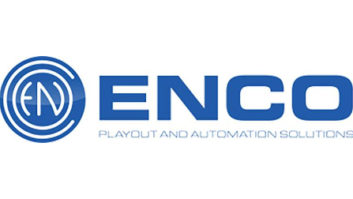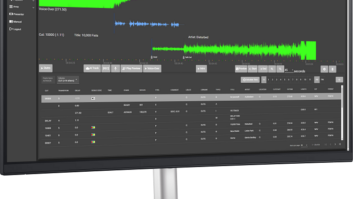It’s December, and while the idea of a long winter’s nap sounds appealing, there’s just no time for such luxuries — because it’s time to make wise-sounding prognostications for 2016.

Image by iStockphoto/Olivier Le Moal Some of the items that follow are reasonable forecasts, and some are pure wishful thinking, and some are just plain nutty, so please take them with the spirit in which they’re intended (that is, if I knew with certainty what is ahead in the coming year, I would have already invested appropriately).
• More stations will realize that there’s a profitable opportunity in sending their HD-2 or HD-3 signals onto an analog translator. Seriously. Listeners in San Antonio, Orlando, Austin, Raleigh and Jacksonville — among other markets — are already tuning in to these translators and increasing their respective host stations’ brand and income streams.
Bottom line for technical: Rising number of translator studies, purchase of new transmission equipment, antenna, hardware and accessories.
• The increased demand for over-the-air data will drive the creation of novel analog FM receivers that implement RDS2 which, in turn, will cause HD Radio stations to boost their data capacity. Non-media companies will realize that these over-the-air, one-to-many data paths are extremely economical for sending everything from Word docs to hi-res audio files, so much so that the giant wireless providers will begin renting broadcast data bandwidth to communicate, one way, to their field technicians.
Meanwhile, Europe goes gaga for RDS2 and implements a free, continent-wide, one-to-many mesh network, where most of the content transmitted is, unfortunately, pictures of cute dogs in restaurants.
• Broadcast FM/HD Radio receivers in smartphones finally become “a thing” when the wireless providers cap all users’ monthly data limit at 1 GB with a $50 per gigabyte fee above that cap. Consumers will immediately adapt by throttling down their phone data rate to 300 baud and buffering every incoming audio and video stream. The delay between selecting a stream on one’s phone and actually hearing or seeing the stream will be comparable to the vacuum tube warm-up delay of a 1923 Kent-Atwood radio.
Why did the wireless providers choose to boost their data prices? Because the success of the pharmaceutical industry’s practice of arbitrarily-set prices for live-saving drugs was an irresistible business model.
• In 2016, broadcast transmitters will become more energy-efficient and manufacturers will implement geothermal technology for cooling. Bottom line for broadcasters: Every new transmitter will require either a 300-foot-deep hole below the transmitter for the geo-thermal pipes (easiest), or a series of heat-transfer pipes buried under the driveway entrance (great for melting snow accumulations on the way to the transmitter shack).
• High-resolution audio will suddenly become shiny and new and rave — those of us who loved hi-fi before it was in vogue (again) will shake our heads. Cars, commercial aviation, home theatre and kitchen table devices will all offer high resolution audio playback. New and old albums, freshly remastered to 24 bit/192 kHz, will be the rage and consumers will remark that listening to their old lossy-compression music makes them morose and depressed.
The biggest surprise of the year will be the number of consumers opting to buy hi-res versions of 1970s disco music.
Some music resellers will try to capitalize on the hi-res bandwagon by selling high-bitrate MP3 files, which will bear the slogan “Imagine that you can hear the difference.”
• The podcast craze will intensify with a wacky new radio programming format: Instead of spinning music, stations will play random podcast episodes — it’ll be just like music, but longer, and with more spoken word. It would be like the Huffington Post’s giant blog aggregator (or blogregator) but with a yet-to-be-invented radio automation system that scrubs the Internet for every available podcast, rejects those with offensive language and then neatly schedules acceptable podcasts for broadcast around the station’s real content. Payment for the podcast content would follow the Huffington Post business model, where the broadcast exposure is in and of itself compensation.
• A flashback of Radio Shack’s FM Wireless Microphone Kit (Science Fair Electronic Project Kit Part 28-109) inspires the following:
DTS Inc. (nee: iBiquity Digital Corp.) would partner with Newark element 14 to produce an FCC Part 15-compliant FM HD Radio transmitter kit and an FM HD Radio receiver kit, each driven by a Raspberry Pi computer (sold separately). Imagine the pleasure of building a battery-powered FM transmitter again, but fresh and updated for the 21st century.
The transmitter kit would support the full Program Service Data (PSD) and Station Information Service (SiS) data streams, and may even permit custom PSD configurations.
Young engineers can build the kit, plug it onto a Raspberry Pi and have hours of fun transmitting audio and data (even files!) around their house. The HD Radio receiver kit would be a fully functional HD Radio reference receiver and the kids, when not running their transmitter kit, could hear local HD Radio stations and examine the station’s PSD data in detail. Students would even get a discount coupon for David Maxson’s excellent publication “The IBOC Handbook” that will introduce them to the technical basis of in-band on-channel broadcasting. Truly, this would stimulate sizable interest in HD Radio by making it real and available to students, Do-It-Yourselfers, hobbyists and the technology-curious.
Those are my future thoughts and wishes. Thanks to all the RWEE sponsors for their support this year, the readers who suggested, prodded and commented on the articles, and to the Editor-in-Chief Paul McLane for making this the funnest job in radio.
Rich Rarey is RWEE technical editor and principal of Rareworks LLC consulting.











